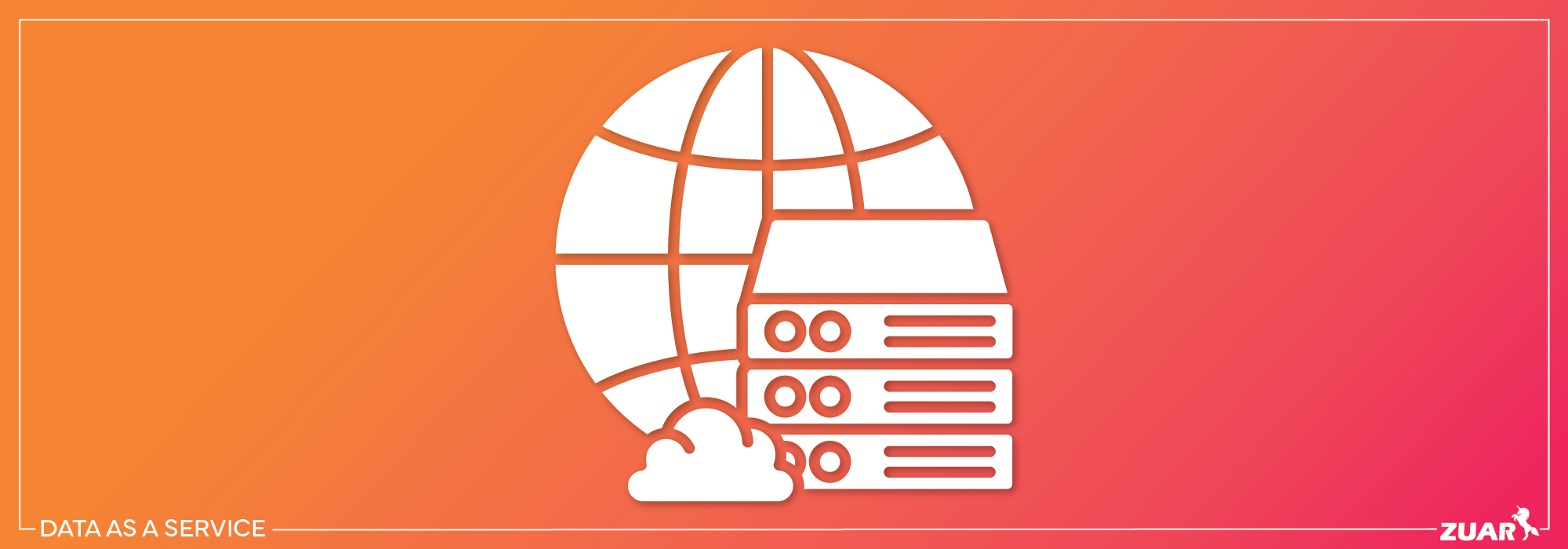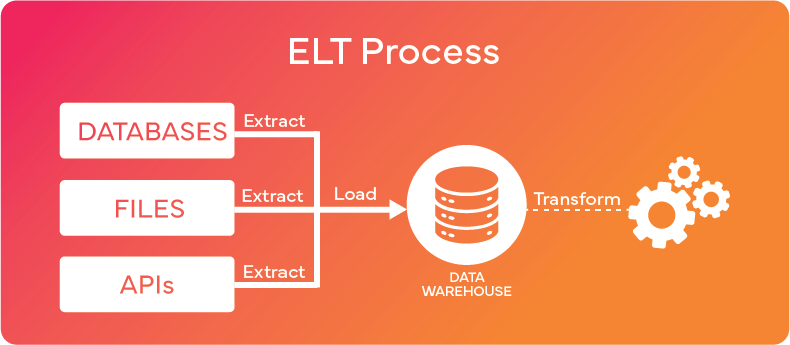What Is Data as a Service (DaaS)? Benefits & More
Learn what data as a service (DaaS) is, the benefits it can bring to businesses, examples of DaaS tools, and more!

What Is Data as a Service?
Data as a Service (DaaS) refers to the concept of providing data storage, processing, analytics, and other data capabilities as an on-demand service.
With data as a service, organizations can access and analyze data on an as-needed basis, without having to invest in and manage large data infrastructure and platforms themselves.
At its core, DaaS delivers data management and usage as a cloud-based service. Companies can leverage DaaS solutions to store structured and unstructured data across public, private, or hybrid cloud environments.
Key Takeaways
- DaaS provides data analytics capabilities as an on-demand cloud service, enabling organizations to leverage insights without major infrastructure costs.
- Benefits of DaaS include cost savings, scalability, faster insights, and business focus, though it also presents challenges like security risks and vendor dependence.
- DaaS use cases include R&D, sales/marketing, financial reporting, and supply chain optimization.
Benefits of Data as a Service
Data as a Service offers several key benefits for organizations looking to leverage data analytics and insights without the burden of building and maintaining complex data infrastructure.
Cost Savings
One of the biggest advantages of data as a service is significant cost savings compared to owning and managing data infrastructure. With DaaS, organizations pay only for the data they need, when they need it.
They avoid large capital expenditures (CapEx) on hardware, software, maintenance, and IT staffing required for on-premises data analytics platforms. DaaS allows scaling data usage up and down on demand.
Scalability and Flexibility
DaaS provides easy scalability to support both short-term projects and fluctuating workloads, as well as long-term growth. Organizations can start small with a proof of concept, then quickly scale up as needs expand.
The cloud-based nature of DaaS means capacity can be added or reduced almost instantly. This scalability and flexibility is difficult to achieve with on-premises systems.
Faster Time to Insights
With data as a service, organizations can gain insights from their data much faster compared to traditional analytics tools. The time required to set up infrastructure is eliminated.
Subject matter experts can quickly access ready-to-analyze data through intuitive interfaces rather than waiting on IT and data engineers. This enables faster iterations and reduces time to uncover impactful insights.
Focus on Core Business
Data as a service alleviates the burden of building and maintaining data infrastructure, freeing up resources to focus on core business goals. Technical staff are no longer bogged down supporting complex data pipelines.
Instead, they can dedicate time to high-value activities that drive business outcomes. The organization avoids the overhead of managing infrastructure and can redirect those efforts toward differentiating capabilities.

Data as a Service Challenges
Data as a Service provides organizations with many benefits, but it also comes with some challenges that need to be addressed. Some of the key challenges with DaaS include:
Data Security and Privacy Concerns
One major concern with data as a service is data security and privacy, especially when sensitive data is involved. Organizations need to carefully evaluate security measures and privacy policies of any potential DaaS provider.
With data residing outside the organization's own infrastructure, there is always a risk of unauthorized access or data breaches.
DaaS providers must have robust security in place, including encryption, access controls, and compliance with regulations. Organizations should conduct risk assessments and due diligence before adopting DaaS.
Vendor Dependence and Lock-In
Adopting data as a service often means becoming dependent on an external vendor. This can limit flexibility and control compared to managing data internally. There is also the risk of vendor lock-in if data and integrations are tied to proprietary platforms.
Migrating large datasets to a new provider is challenging. Organizations should negotiate appropriate exit strategies with vendors and use open APIs and standard integrations where possible.
Integration with Legacy Systems
Integrating data as a service with existing on-premises infrastructure and legacy systems can be difficult. DaaS may use data structures, APIs, and platforms different from current systems.
IT teams need sufficient resources to build and maintain integrations between DaaS and internal systems. Adequate bandwidth must be provisioned as large volumes of data may need to be moved back and forth.
With careful planning and vendor evaluation, organizations can overcome these challenges and successfully leverage DaaS for analytics, storage, and other use cases. However, the risks must be addressed upfront through security controls, service agreements, and integration strategies.

Data as a Service Tools
Data as a Service relies on cloud-based tools and platforms to deliver data on demand to users. Some of the most popular DaaS tools include:
The Zuar Stack
The 'Zuar Stack,' consisting of Zuar Portal and Zuar Runner, can be used as a powerful data as a service toolset, providing organizations with end-to-end data automation and delivery solutions.
Zuar Runner serves as the backbone, automating data pipelines, transforming and enhancing raw data, and enabling seamless connectivity to a wide range of data sources. This allows organizations to easily extract and transform data from disparate sources, ensuring data hygiene and consistency.
In contrast, Zuar Portal acts as the front-end interface, providing a white label solution to create personalized, data-driven customer experiences, securely share insights, and embed BI tools into existing applications. Click here to start a free trial of Zuar Portal!
Together, the Zuar Stack empowers organizations to streamline their data workflows, automate data delivery, and provide a centralized, user-friendly platform for analyzing data, making them a comprehensive data as a service toolset.
Amazon Redshift
Amazon Redshift is a cloud-based, petabyte-scale data warehouse service. It allows users to run complex analytic queries against petabytes of structured data, using SQL, data visualization tools, and business intelligence software.
Redshift provides an easy way to consolidate data from different sources, transform it, and load it into a data warehouse for analysis.
Snowflake
Snowflake is a cloud-based elastic data warehouse designed for the cloud. It provides a data warehouse-as-a-service solution that is scalable, flexible, and fast. Snowflake separates storage and compute, allowing each to scale independently.
This enables users to access and analyze large amounts of data efficiently. Snowflake also has unique features like zero-copy cloning and time travel.
These tools exemplify the power and flexibility of DaaS solutions. By leveraging cloud-based data platforms, organizations can quickly and cost-effectively analyze large, complex data sets without having to build and maintain their own on-premises data warehouses.
Learn more about the differences between Redshift and Snowflake:


Integrating Data as a Service With Legacy Systems
Integrating a new DaaS platform with legacy on-premises systems can be challenging, but is often necessary to enable a successful migration to the cloud. There are a few key strategies to enable integration:
Using APIs and Connectors
Most DaaS platforms provide APIs and pre-built connectors that allow two-way access between the DaaS platform and on-premises databases, data warehouses, and other data sources.
These APIs and connectors enable transferring data back and forth, while also keeping data in sync between systems. This allows new cloud analytics and applications to leverage legacy data.
Businesses can also use third-party ETL/ELT solutions to fast-track the data integration process. Tools like Zuar Runner have dozens of pre-built data connectors that can get data flowing in minutes.

Data Migration Strategies
Migrating legacy data to a DaaS platform requires planning to minimize downtime and ensure continuity.
Common strategies include trickle migrations of small data sets over time, running the DaaS and legacy system in parallel, and bulk data transfers during downtime windows. Most DaaS platforms have data migration tools to automate and simplify transfers.
Ensuring Data Governance
With data residing both on-premises and in the cloud, governance becomes more complex. Companies need to ensure consistent data security, access controls, compliance, and management across environments.
DaaS platforms provide many built-in governance capabilities, but they still need to be properly configured and mapped to legacy governance policies. Strong change management and training is also essential.

Data as a Service Use Cases
Data as a Service can provide immense value for organizations across many industries and use cases. Here are some of the most common and impactful DaaS use cases:
Research and Development
Research and development (R&D) teams can leverage DaaS to gain access to large datasets that can enable advanced analytics, machine learning model training, and other techniques to accelerate innovation.
Rather than building and maintaining expensive data infrastructure, R&D can tap into DaaS providers for the data they need. This allows them to focus resources on core research vs data wrangling.
Sales and Marketing Analytics
DaaS empowers sales and marketing teams to extract more insights from customer data. By combining internal CRM data with external third-party data sources via DaaS, sales and marketing analytics become much more powerful.
Teams can identify trends, optimize campaigns, segment customers, and personalize experiences more effectively. DaaS allows these insights to be achieved faster and with less overhead.
Financial Reporting
Financial reporting can be enhanced through DaaS integration. DaaS providers may offer access to financial data, benchmarks, and tools that can bolster financial analytics.
DaaS can also power faster and more automated financial reporting. Rather than relying on time-consuming manual processes, DaaS can feed key financial data into systems in a seamless way.
Supply Chain Optimization
Access to quality data on suppliers, logistics, and inventory can help optimize supply chain operations. DaaS can aggregate data from IoT sensors, logistics providers, suppliers, and internal ERP systems to improve visibility.
This data can feed supply chain analytics and modeling to minimize costs and risks. DaaS allows disparate supply chain data to be integrated without the need for massive IT infrastructure.

DaaS Security Considerations
Security is a major concern when adopting any cloud-based service, and DaaS is no exception. Organizations must evaluate several factors related to securing their data with a DaaS provider:
Encryption - Data should be encrypted both in transit and at rest. This prevents unauthorized access if data is intercepted or the cloud provider is breached.
Access Controls - Granular access controls should restrict data access to only authorized users and systems. Role-based access and multi-factor authentication adds additional layers of security.
Auditing - Activity logging provides visibility into data access. DaaS providers should have robust auditing capabilities to track queries, data extractions, and modifications.
Vendor Practices - The DaaS provider's security practices should align with industry standards and regulations. Vendors should undergo independent audits and be transparent about their internal controls.
Data Regulations - Depending on the data sensitivity, regulations like HIPAA or PCI may apply. Organizations must select DaaS providers that enable compliance with relevant data protection laws.
Properly securing data is a joint responsibility between the customer and the DaaS provider. Organizations should review the provider's security architecture, access controls, and auditing before committing sensitive data to a DaaS platform.
Ongoing due diligence is required to validate that security keeps pace with emerging threats.

When to Adopt Data as a Service
Deciding when to adopt Data as a Service requires careful consideration of your organization's needs, resources, and risk tolerance. Here are some key factors to weigh in your cost/benefit analysis when evaluating DaaS:
Cost/Benefit Analysis
- Assess if the benefits of DaaS outweigh the costs. DaaS can provide significant cost savings by eliminating the need to purchase and maintain your own hardware and data infrastructure. However, you will incur ongoing costs for data storage and services. Compare potential cost savings against DaaS expenses.
- Consider how DaaS can enable your organization to scale data analysis and gain business insights more rapidly and cost-effectively than traditional on-premises solutions. Faster time to value is a major benefit of DaaS.
- Factor in costs of migrating and integrating data to a DaaS platform from legacy systems. This is a one-time transition cost that should pay dividends over the long term.
Willingness to Move Data to the Cloud
- Determine if your organization is ready to store proprietary data with a third-party DaaS provider. Assess data sensitivity, security requirements, and regulatory compliance implications.
- Ensure you understand the security protocols and reliability of the DaaS provider in protecting your data. This is especially critical for organizations handling sensitive customer information.
- Consider if certain datasets may need to remain on-premises. A hybrid DaaS approach can allow you to enjoy the benefits of cloud analytics while keeping regulated or highly sensitive data in your own environment.
Related Article:

Need for Scalability and Flexibility
- Evaluate if your current data infrastructure limits your ability to scale analytics and deliver insights rapidly. DaaS removes capacity constraints.
- Determine if your organization needs the flexibility to analyze varied datasets. DaaS makes it easy to leverage new data sources without investing in infrastructure.
- Assess if your business is growing or changing in ways that require a more agile analytics approach. The scalability and flexibility of DaaS can accelerate data-driven innovation.
Carefully weighing these factors allows organizations to make an informed decision about when to adopt DaaS based on their unique business needs and constraints.
DaaS's cloud-based analytics are well-suited for data-driven organizations seeking scalability, flexibility, and lower costs. However, DaaS may not be the best choice for every company.

Implementing Data as a Service
Selecting the best DaaS tools, implementing them, integrating them with legacy systems, and enabling your team can be an incredibly challenging task - especially when done without external support. But that's where Zuar Labs can help.
The comprehensive data services provided by Zuar Labs can greatly assist companies in implementing data as a service solutions. With expertise in data strategy, architecture, staging, modeling, preparation, visualization, and enablement, Zuar Labs offers a holistic approach to DaaS implementation.
By collaborating closely with organizations from initial kick-off through recurring meetings, Zuar Labs can tailor their services to meet specific needs and timelines, delivering fast outcomes and results to both internal and customer audiences.
Trust Zuar Labs to be your expert partner in implementing data as a service, empowering your organization to unlock the full value of data-driven decision-making. Meet with one of our data experts to learn more about our solutions and services!



